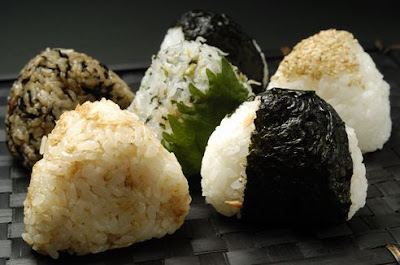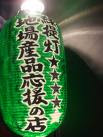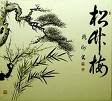::::::::::::::::::::::::::::::::::::::::::::::::::::::::::::::::::::::::::::::::::::::::::::::::::::
Tokushima

Tokushima Prefecture (徳島県, Tokushima-ken) is a prefecture of Japan located on Shikoku island. The capital is the city of Tokushima.
Long ago, Tokushima City belonged to a region known as Myodo-gun.
Agriculture
Tokushima is abounds in agricultural resources, and is the site of large-scale production of many different types of v egetables. The plains north of the Yoshino River are particularly fertile, and the produce here is often shipped to across to mainland Japan in the area around Kobe, Osaka and Kyoto. Produce from Tokushima always claims top shares in markets in the Kansai region, and particularly prominent are Naruto sweet potatoes, the citrus fruit 'sudachi', lotus roots and strawberries.
Unfortunately, the lack of goods heading to Tokyo has lead to a relatively low national profile for local Tokushima brands. To combat this, the local Tokushima Government now sends the "Fresh! Tokushima" moving display about the country with its mobile kitchen set to increase general awareness of the local food available in Tokushima Prefecture.
Rice - Anan City
Corn - Ishii-cho, Yoshinogawa City East
Sudachi - All across the prefecture, but mainly in Kamiyama-cho
Bamboo Shoots - Anan City
Spring Onions - Tokushima City
Lettuce - Awa City and the north shore of the Yoshino River
Lotus roots - Naruto City
Carrots - All across the prefecture, but mainly in Aizumi-cho
Cranshaw - All across the north shore of the Yoshino River, but mainly in Itano-cho
Rakkyo - Naruto City
Taranome - All across the West of the prefecture, but mainly in Yamashiro-cho, Miyoshi City
Sencha - Yamashiro-cho, Naka-cho, and the former Aioi-cho
Strawberries - All through the mountainous regions, but mainly in Sanagouchi-son
Grapes - Awa City
Egg plant - Naruto City
Satsuma mandarins - All across the prefecture, but mainly in Katsuura-cho
Yuzu - Naka-cho
Yamamomo - Komatushima City
Tsumamono - Kamikatsu-cho, Yamashiro-cho, Kamiyama-cho
Daikon radish - Naruto City
© More in the WIKIPEDIA !
:::::::::::::::::::::::::::::::::::::::::::::::::::::::::::::::::::::::::::::::::::::::::::::::::::
amego no hirarayaki あめごのひらら焼き
amego あめご Oncorhynchus masou; cherry salmon
hirara is a flat stone plate
Fish from the river Yoshinogawa are grilled, adding Tofu, Konnyaku, vegetables and other ingredients.
. . . CLICK here for Photos !
Awaodori 阿波尾鶏 chicken
free-range jidori fowl
. . . CLICK here for Photos !
booze no sugata sushi ぼうぜの姿寿司 / ぼうぜの姿鮨
booze the name of a local fish. (Tokyo: いぼ鯛 ibodai, ebodai, Osaka: ubose, Kita-Kyushu : shizu).
This dish is especially delicious in Autumn, prepared for the many local Autumn festivals..
. . . CLICK here for Photos !
Iya soba 祖谷渓の蕎麦 buckwheat noodles from Iya valley
The Soba are a bit thicker than elsewhere in Japan, and also shorter.
The soup is made with dried anchovis.
. . . CLICK here for more Photos !
kancha 寒茶 tea harvested in the cold
Usually in January. The thick leaves are steamed for 30 minutes, then rubbed with a maschine and after that with the hands. Dried in the sun. For drinking, steep in hot water for 2 minutes and let stand for 3 minutes before consuming. A friend of the old people of many villages, especially in Kaiyoochoo 海陽町. They are trying to revive it and sell it in bottles for fast consumption of modern people.
. . . CLICK here for Photos !
katsu カツ cotelette of kirimi fishpaste
katsuten カツ天 as tenpura
katsubaaga カツバーガー in a hamburger
. . . CLICK here for Photos !
mekanzoo 芽甘草 (めかんぞう, メカンゾ)
buds of special beans
. . . CLICK here for Photos !
:::::::::::::::::::::::::::::::::::::::::::::::::::::::::::::::::::::::::::::::::::::::::::::::::::::
Naruto Kintoki satsuma imo 鳴門金時 サツマイモ
Naruto sweet potatoes
. . . CLICK here for Photos !
Cheese cake with sweet potatoes
Photo Gabi Greve
:::::::::::::::::::::::::::::::::::::::::::::::::::::::::::::::::::::::::::::::::::::::::::::::::::::
Naruto sumiboshi wakame 鳴門炭干しわかめ
dry seaweed with charcoal ash
wakame are covered with black charcoal ash and dried on the beach for 4 days. This is the old treatment of the Edo period to make them last longer.
. . . CLICK here for Photos !
:::::::::::::::::::::::::::::::::::::::::::::::::::::::::::::::::::::::::::::::::::::::::::::::::::::
okonomiyaki お好み焼きに天ぷら with tempura
from ebi kakiage, shrimps with vegetables
CLICK here for PHOTOS !
. . . with red azuki beans, mametama 豆玉で
CLICK here for PHOTOS !
:::::::::::::::::::::::::::::::::::::::::::::::::::::::::::::::::::::::::::::::::::::::::::::::::::::
shoi no mi しょいのみ shooyuu no mi
beans cooked in soy sauce
speciality from Miyoshi town 三次。It can be eaten on rice with green tea (o-chazuke) or with cucumbers or any other kind of the imagination of the local housewifes.
. . . CLICK here for Photos !
Sudachi すだち(酢橘)Relative of the yuzu.
Mostly used when the peel is still green. When ripe, the peel turns to orange color.
. . . CLICK here for Photos !
kigo for autumn
Toodai raamen 東大ラーメン Todai Ramen, Todai Noodle Soup
with a raw egg on top
served with rice, the ingredients in the soup are placed on rice and eaten.
. . . CLICK here for Photos !
utsubo うつぼ moray eel
it is cut in one long stripe, dried in the sun and wind of the beach. All is eaten, the head and intestines come in a miso soup.
牟岐町 Mugichoo
CLICK for photos !
wasanbon 和三盆 wasambon
Japanese sugar from Kagawa and Tokushima
yookai nabe 妖怪鍋 "monster soup" and more MONSTER dishes
Miyoshi, Yamashiro Oboke Yookai Mura
*****************************
Worldwide use
Ooasahiko and Hakuchoo Daruma
also : Naruto, the German House
::::::::::::::::::::::::::::::::::::::::::::::::::::::::::::::::::::::::::::::::::::::::::::::::::::
Das Iya-Tal in Tokushima いや【祖谷】
. . . CLICK here for Photos !
Im Westen der PräfekturTokushima liegt das steile Iya-Tal im Nationalpark des Berges Tsurugi-san, mit 1954 Metern dem zweithöchsten Berg der Insel Shikoku. Dieser Berg ist ein altes Zentrum der Bergasketen des Shugendoo und auf seinem Gipfel ist ein kleiner Shintoo-Schrein. Die Täler in dieser Gegend, dem „Tibet Japans“, sind seit alter Zeit sehr unzugängig und boten den Flüchtlingen des Clans der Heike eine Zuflucht, nachdem ihre Soldaten am Ende des 12. Jahrhunderts die entscheidende Schlacht bei Dan-no-Ura gegen den Minamoto-Clan verloren hatten. Diese Flüchtlingsgruppen siedelten an den steilen Hängen, lebten von den Tieren und Pflanzen des Waldes, bauten etwas Buchweizen an und bewahrten in den Tälern ihre alten Traditionen und ihre höfische Sprache, bis ab 1970 auch hier neue Straßen für mehr Kontakt mit der Zivilisation sorgten.
Die steilen Schluchten waren kaum zu überwinden, daher bauten die Bewohner bis zum Beginn neuer Baumethoden nur schwankende Hängebrücken aus Schlingpflanzen, die inzwischen auch mit Stahlseilen verstärkt sind. Dokumente aus dem Jahre 1675 berichten bereits von 13 Hängebrücken dieser Art. Wenn sich Feinde näherten, konnte man dies Brücken kurzerhand an einer Talseite abschneiden.
Nur die berühmte Hängebrücke Kazurabashi かずらばし über den Fluß Iyagawa, heute eine Touristenattraktion, wird noch im alten Zustand gepflegt. Sie ist 45 Meter lang und zwei Meter breit und liegt 15 Meter hoch über dem Fluß. Sie ist ein nationales Folklore-Kulturdenkmal und wird alle drei Jahre nach altem Brauch repariert.
. . . CLICK here for Photos !
Chiiori das Haus der Flöte 篪庵(ちいおり)
. . . CLICK here for Photos !
In einem dieser steilen Täler liegt das „Haus der Flöte“, Chiiori. 1973 erwarb der Amerikaner und Japanologe Alex Kerr ein 200 Jahre altes strohgedecktes Bauernhaus mit einem offenen Herd in der Küche im Dorf Tsurui im Ost-Iya-Tal. Nach einigem Renovieren und Umarbeiten ist es seit 2005 das Zentrum des „Chiiori-Trusts“ und lockt viele Touristen aus der ganzen Welt, die sich an der abgelegenen, ländlichen Atmosphäre erfreuen oder als Voluntäre für einige Wochen mitarbeiten als Zimmerleute, Dachdecker oder Landarbeiter.
Alex Kerr (geb. 1952) ist Autor einiger Bücher über Japan, besonders bekannt sind „Lost Japan“ (1994) und „Dogs and Demons“ (2002), in denen er sich mit den Einflüssen der modernen Zivilisation und Verwestlichung auf die traditionelle Lebensweise der Japaner befaßt. In Kyoto arbeitet er mit an Projekten zur Wiederbelebung der alten traditionellen Stadthäuser (machiya).
quote
In 1971 I first discovered Iya 祖谷 Valley, a remote mountainous region in Tokushima Prefecture 徳島県 in the center of Shikoku. The Iya gorges 祖谷峡 are Japan's deepest, sometimes called "Japan's Grand Canyon," . Iya is so secluded that over the centuries refugees from Japan's civil wars fled into Iya and settled there, notably the Heike survivors from the Genji/Heike wars of the 12th century. Even now Iya people speak a dialect with traces of ancient Heian court language.
...
I named the house Chiiori 篪庵 , which means "House of the Flute." For the first few decades, my friends and I lived quietly in the house, and we succeeded in re-thatching the roof in the late 1980s.
source : www.alex-kerr.com
© Alex Kerr in the WIKIPEDIA !
. . . . .
Iyasoba sarada
Nudelsalat mit Buchweizennudeln aus dem Iya-Tal
120 g Iyasoba-Nudeln (Buchweizennudeln)
2 Eier, als Omelett gebraten und in Streifen geschnitten
100 g Mizuna-Wildnessel, auf 3 cm Länge geschnitten
1 Tomate, geachtelt
3 EL Sojasauce
3 EL Essig
2 EL Mayonnaise
1/4 TL Wasabi-Paste
40 g Buttererdnüsse, gehackt
Nudeln kochen und zum Abtropfen auf ein Sieb legen.
Nudeln in eine Schale legen und mit Eierstreifen, Küchenkraut und Tomate garnieren.
Sojasauce, Essig, Mayonnaise und Wasabi-Paste verrühren, als Dressing über die Nudeln gießen und alles mit Erdnüssen bestreuen.
.................................................................................

mochinashi zooni 餅なし雑煮
new year zoni soup without mochi
is a speciality of the Iya valley. On the slopes they could not grow rice, but a lot of soybeans, so they put a specially hard tofu in the soup, together with potatoes and yam roots. The bowl is filled with two large pieces of tofu and the lid does udually not fit any more.
Iya Zooni 祖谷雑煮
ishidoofu 石豆腐 "stone tofu" ishi-dofu
it is made with the double amount of nigari bitter than usual Tofu and contains less water. It can be wrapped around with just one straw rope and carried home like this.

祖谷豆腐 Iya Tofu
Iya Valley Heike Bento 祖谷平家弁当
*****************************
Things found on the way
*****************************
Related words
***** WASHOKU : Regional Japanese Dishes
***** . Folk Toys from Tokushima .
-- #tokushima --
:::::::::::::::::::::::::::::::::::::::::::::::::::::::::::::::::::::::::::::::::::::::::::::::::::

















